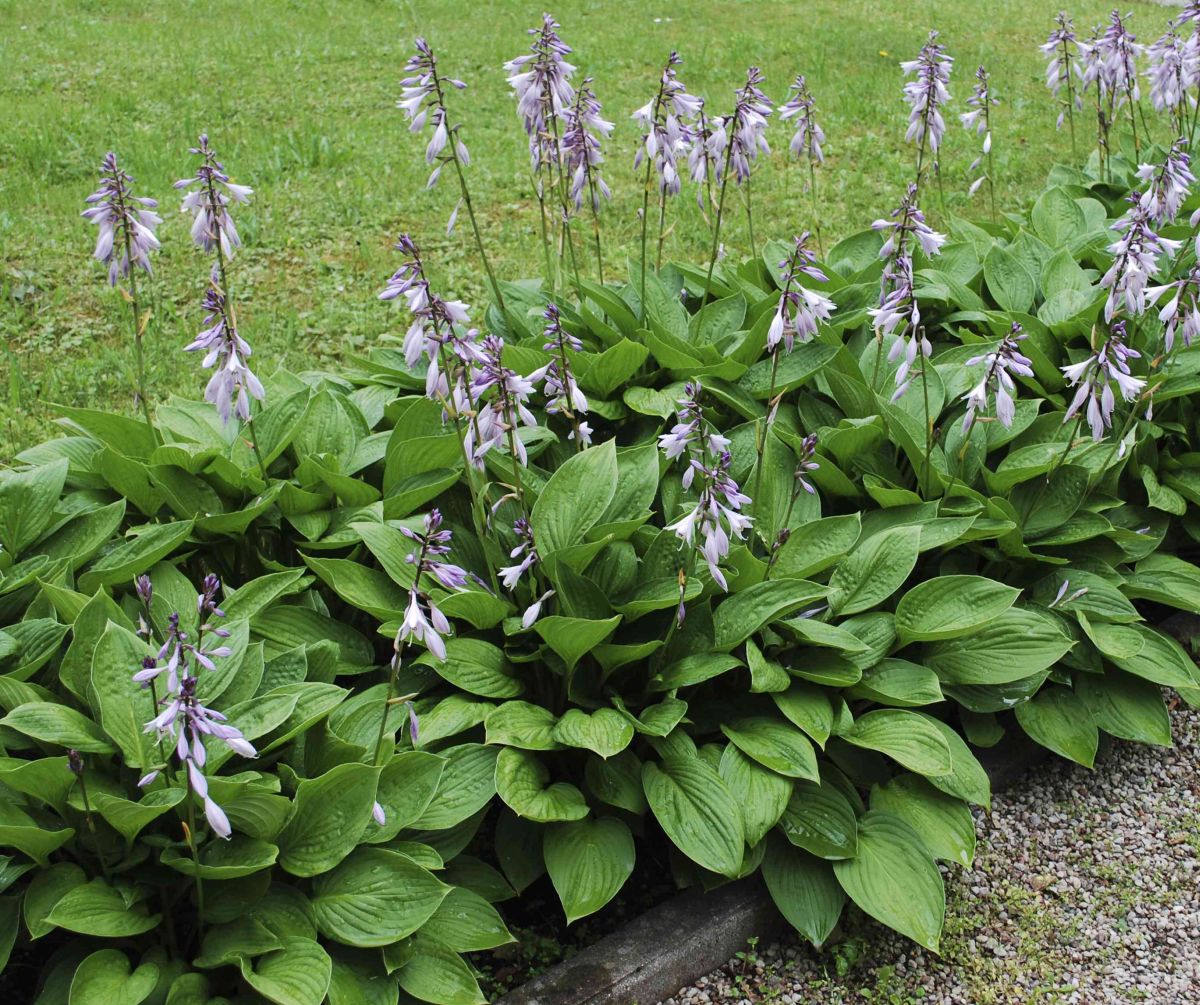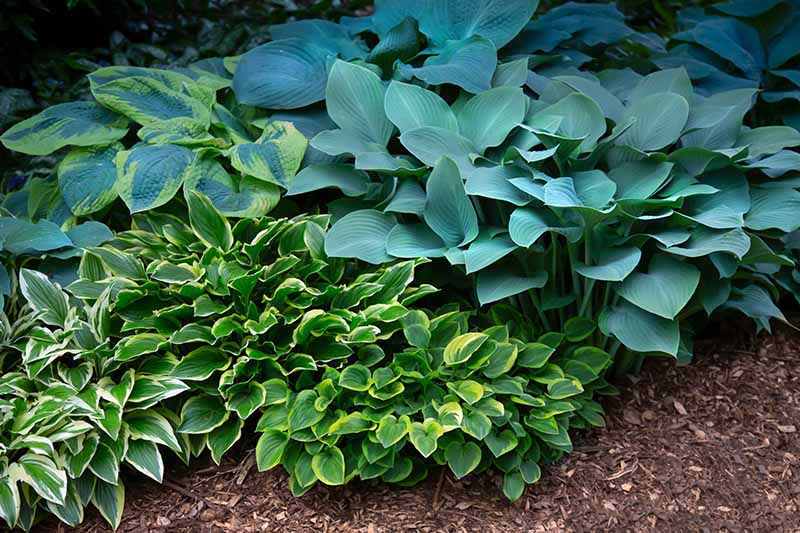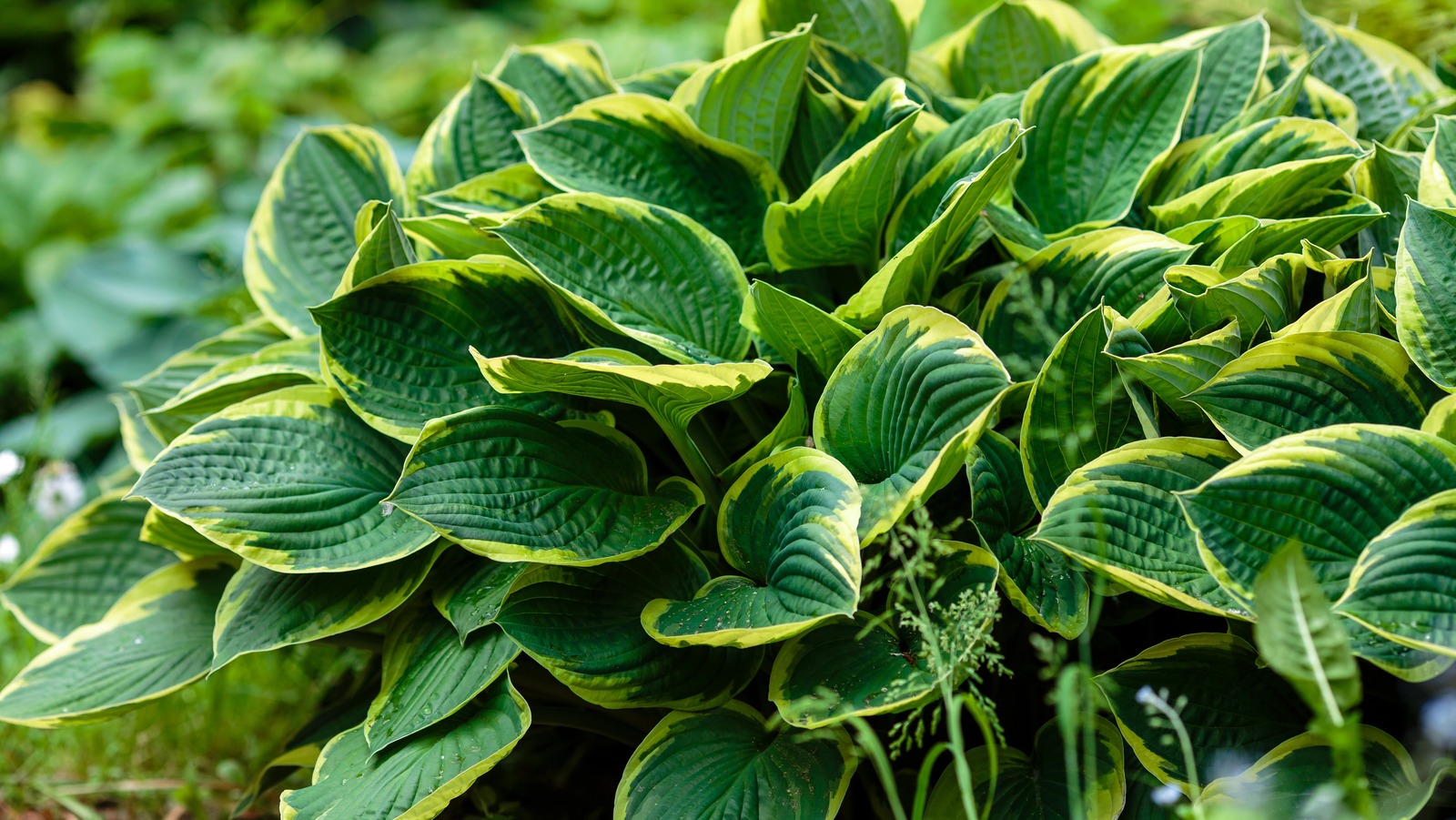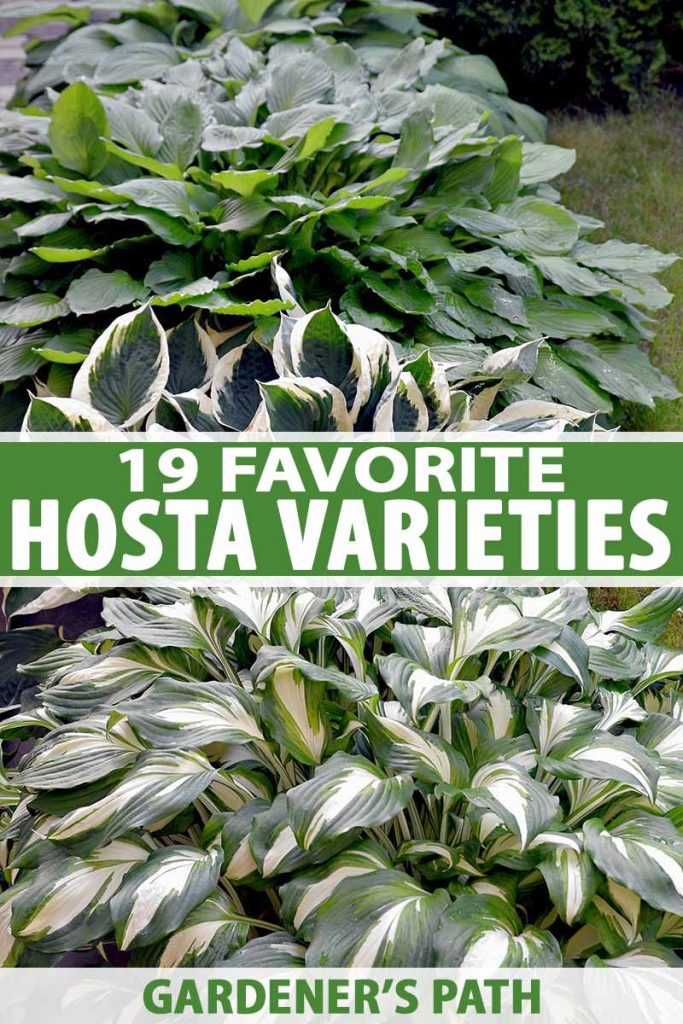Unlocking the Secrets of Hosta Plants: Choosing the Right Environment
Hosta plants are incredibly versatile, thriving in a wide range of environments, from indoor containers to outdoor gardens. When it comes to deciding whether to grow hostas indoors or outdoors, it’s essential to consider the specific needs of these plants. Hostas generally prefer bright, indirect light and consistent moisture, making them an excellent choice for shaded outdoor areas or indoor spaces with limited natural light.
One of the primary advantages of growing hostas outdoors is the ability to take advantage of natural light and soil conditions. Outdoor hostas can tolerate a range of soil types and pH levels, making them a low-maintenance option for gardeners. However, outdoor hostas may be more susceptible to pests and diseases, such as slugs and snails, which can be detrimental to their health.
On the other hand, growing hostas indoors provides more control over the environment and can help to prevent pests and diseases. Indoor hostas can thrive in containers with well-draining soil and partial shade, making them an excellent choice for rooms with limited natural light. However, indoor hostas may require more frequent watering and fertilization, as the soil can dry out quickly in indoor conditions.
Ultimately, the decision to grow hostas indoors or outdoors depends on the specific conditions and preferences of the gardener. By understanding the needs and preferences of hosta plants, gardeners can create an ideal environment for these versatile plants to thrive. Whether grown indoors or outdoors, hostas are sure to provide beautiful foliage and a touch of elegance to any space.
How to Create a Hosta-Friendly Outdoor Oasis
Creating an ideal outdoor environment for hostas requires careful consideration of several factors, including location, soil, and sunlight conditions. When selecting a location for your hosta plants, choose a spot that receives partial shade to full shade, as hostas can be sensitive to direct sunlight. A location with morning sun and afternoon shade is ideal, as it provides the necessary light for photosynthesis without causing scorching.
Soil conditions are also crucial for healthy hosta growth. Hostas prefer well-draining soil that is rich in organic matter. To create a hosta-friendly soil, mix in compost or well-rotted manure to improve soil structure and fertility. Avoid planting hostas in areas with standing water or where water tends to collect, as this can lead to root rot and other problems.
In terms of specific hosta varieties, ‘Blue Angel’ and ‘Gold Standard’ are popular choices for outdoor gardens. ‘Blue Angel’ is a large, blue-leaved hosta that is perfect for adding a dramatic touch to the garden, while ‘Gold Standard’ is a smaller, gold-leaved variety that is ideal for adding a pop of color to the landscape.
When planting hostas outdoors, be sure to space them correctly to allow for proper growth and air circulation. Planting hostas too close together can lead to disease and pest problems, so be sure to leave enough space between each plant. With proper care and attention, hostas can thrive in outdoor environments and provide beautiful foliage and texture to the garden.
Bringing the Outdoors In: A Guide to Growing Hostas Indoors
Growing hostas indoors can be a great way to bring a touch of the outdoors into your home. With the right care and attention, hostas can thrive in indoor conditions and provide beautiful foliage and texture to your space. When selecting a container for your indoor hosta, choose one that is at least 6-8 inches deep to allow for proper root growth.
Soil selection is also crucial for indoor hostas. Look for a well-draining potting mix that is specifically designed for indoor plants. Avoid using garden soil, as it can compact and prevent proper drainage. When planting your hosta, make sure to leave enough space between the soil surface and the top of the container to allow for watering.
Lighting conditions are also important for indoor hostas. While hostas can tolerate low light conditions, they will do best in bright, indirect light. Placing your hosta near an east- or west-facing window is ideal, as it will provide the necessary light for photosynthesis without causing scorching.
Popular indoor hosta varieties include ‘Mini Skirt’ and ‘Praying Hands’. ‘Mini Skirt’ is a compact, blue-leaved hosta that is perfect for small spaces, while ‘Praying Hands’ is a unique, upright hosta with beautiful, folded leaves. Both of these varieties are well-suited for indoor conditions and can thrive with proper care.
Using self-watering planters can also be beneficial for indoor hostas. These planters have a built-in water reservoir that allows the plant to draw water as needed, reducing the risk of overwatering. This can be especially helpful for busy people or those who tend to forget to water their plants.
Hosta Plant Care 101: Essential Tips for Healthy Growth
Providing proper care is essential for healthy growth and development of hosta plants, whether grown indoors or outdoors. Watering is one of the most critical aspects of hosta care, as these plants prefer consistent moisture. However, overwatering can be detrimental, leading to root rot and other problems. Check the soil regularly, and water only when the top inch of soil feels dry to the touch.
Fertilizing is also important for hosta growth, as it provides essential nutrients for healthy development. Use a balanced, water-soluble fertilizer during the growing season, following the manufacturer’s instructions for application rates. Avoid fertilizing during the dormant season, as this can cause new growth that may be damaged by frost.
Pruning is another essential aspect of hosta care, as it helps maintain plant shape and promotes healthy growth. Remove any dead or damaged leaves or stems, and cut back the plant to the ground after the first frost. This will help protect the plant from winter damage and promote new growth in the spring.
Monitoring for pests and diseases is also crucial for healthy hosta growth. Keep an eye out for common pests like slugs, snails, and aphids, and treat promptly if necessary. Regularly inspect the plant for signs of disease like yellowing leaves, black spots, or powdery mildew, and take action promptly if you notice any issues.
By following these essential care tips, you can help your hosta plant thrive, whether grown indoors or outdoors. Remember to provide consistent moisture, fertilize regularly, prune as needed, and monitor for pests and diseases. With proper care, your hosta plant will reward you with beautiful foliage and a touch of elegance to your space.
Common Mistakes to Avoid When Growing Hostas Indoors and Outdoors
While hostas are relatively low-maintenance plants, there are several common mistakes to avoid when growing them indoors and outdoors. One of the most common mistakes is overwatering, which can lead to root rot and other problems. To avoid this, make sure to check the soil regularly and only water when the top inch of soil feels dry to the touch.
Underwatering is another common mistake that can cause hostas to become stressed and vulnerable to pests and diseases. Make sure to water your hostas regularly, but avoid getting water on the leaves to prevent fungal diseases.
Inadequate sunlight is another common mistake that can affect hosta growth. While hostas can tolerate low light conditions, they will do best in bright, indirect light. Make sure to place your hostas in a location that receives the right amount of sunlight for optimal growth.
Another common mistake is not providing enough humidity, especially when growing hostas indoors. Hostas prefer a humid environment, typically between 40-60% relative humidity. To increase the humidity around your hostas, you can place the pot on a tray filled with water and pebbles or use a humidifier.
Finally, not monitoring for pests and diseases is a common mistake that can have serious consequences for your hostas. Regularly inspect your plants for signs of pests or diseases, and take action promptly if you notice any issues.
By avoiding these common mistakes, you can help your hostas thrive and enjoy their beautiful foliage and elegant appearance. Whether grown indoors or outdoors, hostas are a great addition to any garden or indoor space.
Hosta Plant Propagation: A Step-by-Step Guide
Propagating hostas is a great way to share these beautiful plants with friends and family, or to create new plants for your own garden. There are several methods of propagating hostas, including division, leaf cuttings, and seed propagation. In this section, we will explore each of these methods in detail.
Division is one of the most common methods of propagating hostas. This involves digging up the entire plant, gently washing away the soil, and separating the roots into individual sections. Each section should have at least one growing eye, which is the small white bud that produces new growth. Replant the sections in well-draining soil, and water thoroughly.
Leaf cuttings are another method of propagating hostas. This involves cutting off a healthy leaf from the mother plant, removing the lower half of the leaf, and planting it in a pot filled with moistened soil. Keep the soil consistently moist, and provide bright, indirect light. Roots should develop within a few weeks, and a new plant will begin to grow.
Seed propagation is a more complex method of propagating hostas, but it can be a fun and rewarding experience. Hosta seeds are typically sown in the fall, about 6-8 weeks before the first frost. Sow the seeds in a pot filled with moistened soil, and provide bright, indirect light. Keep the soil consistently moist, and provide a temperature of around 70-80°F (21-27°C). Germination should occur within 1-3 months, and the seedlings can be transplanted into individual pots once they have 2-3 sets of leaves.
Regardless of the method you choose, make sure to provide your new hosta plants with the right conditions for growth. This includes well-draining soil, bright, indirect light, and consistent moisture. With proper care, your new hosta plants should thrive and provide beautiful foliage for years to come.
Hosta Plant Pests and Diseases: Identification and Control
Hosta plants are generally hardy and resistant to pests and diseases, but they can still be affected by certain issues. Slugs and snails are common pests that can damage hosta leaves and flowers, while crown rot and root rot are diseases that can affect the plant’s roots and crown.
To identify slug and snail damage, look for holes and tears in the leaves, as well as a trail of slime on the leaves and stems. To control slugs and snails, use copper tape or crushed eggshells around the plants, or hand-pick them off at night when they are most active.
Crown rot is a disease that affects the crown of the plant, causing it to rot and turn brown. To identify crown rot, look for a soft, mushy texture on the crown, as well as a foul odor. To control crown rot, remove the affected tissue and treat the plant with a fungicide.
Root rot is a disease that affects the roots of the plant, causing them to rot and turn brown. To identify root rot, look for yellowing or browning of the leaves, as well as a soft, mushy texture on the roots. To control root rot, remove the affected roots and treat the plant with a fungicide.
Other pests and diseases that can affect hosta plants include aphids, whiteflies, and powdery mildew. To control these issues, use insecticidal soap or neem oil, and treat the plant with a fungicide.
Preventing pests and diseases is key to maintaining healthy hosta plants. Make sure to provide good air circulation, water carefully, and fertilize regularly. Also, inspect your plants regularly for signs of pests or diseases, and take action promptly if you notice any issues.
Hosta Plant Varieties: A Showcase of Popular and Unusual Types
With over 7,000 registered hosta varieties, there’s a wide range of options to choose from, each with its own unique characteristics and growing conditions. In this section, we’ll showcase a variety of popular and unusual hosta plant varieties, including ‘Sum and Substance’, ‘June’, and ‘Abiqua Drinking Gourd’.
‘Sum and Substance’ is a popular hosta variety known for its large, golden-yellow leaves and vigorous growth habit. It’s a great choice for adding a splash of color to the garden, and can thrive in a variety of lighting conditions.
‘June’ is another popular hosta variety, known for its beautiful, blue-green leaves and delicate white flowers. It’s a great choice for adding a touch of elegance to the garden, and can thrive in partial shade to full sun.
‘Abiqua Drinking Gourd’ is a unique hosta variety known for its large, cupped leaves and vigorous growth habit. It’s a great choice for adding a touch of drama to the garden, and can thrive in partial shade to full sun.
Other popular hosta varieties include ‘Blue Angel’, ‘Gold Standard’, and ‘Praying Hands’. Each of these varieties has its own unique characteristics and growing conditions, and can add a touch of beauty and elegance to the garden.
When choosing a hosta variety, consider the specific growing conditions of your garden, as well as your personal preferences for leaf color, size, and shape. With so many varieties to choose from, you’re sure to find the perfect hosta for your garden.




:max_bytes(150000):strip_icc()/how-to-plant-hostas-3963861-05-832521260dbc43c9bc9994cc99eae1c4.jpg)


:strip_icc()/Hosta-Diamonds-are-Forever-3e2611c2da284d138aa294ea9379c8b9.jpg)

